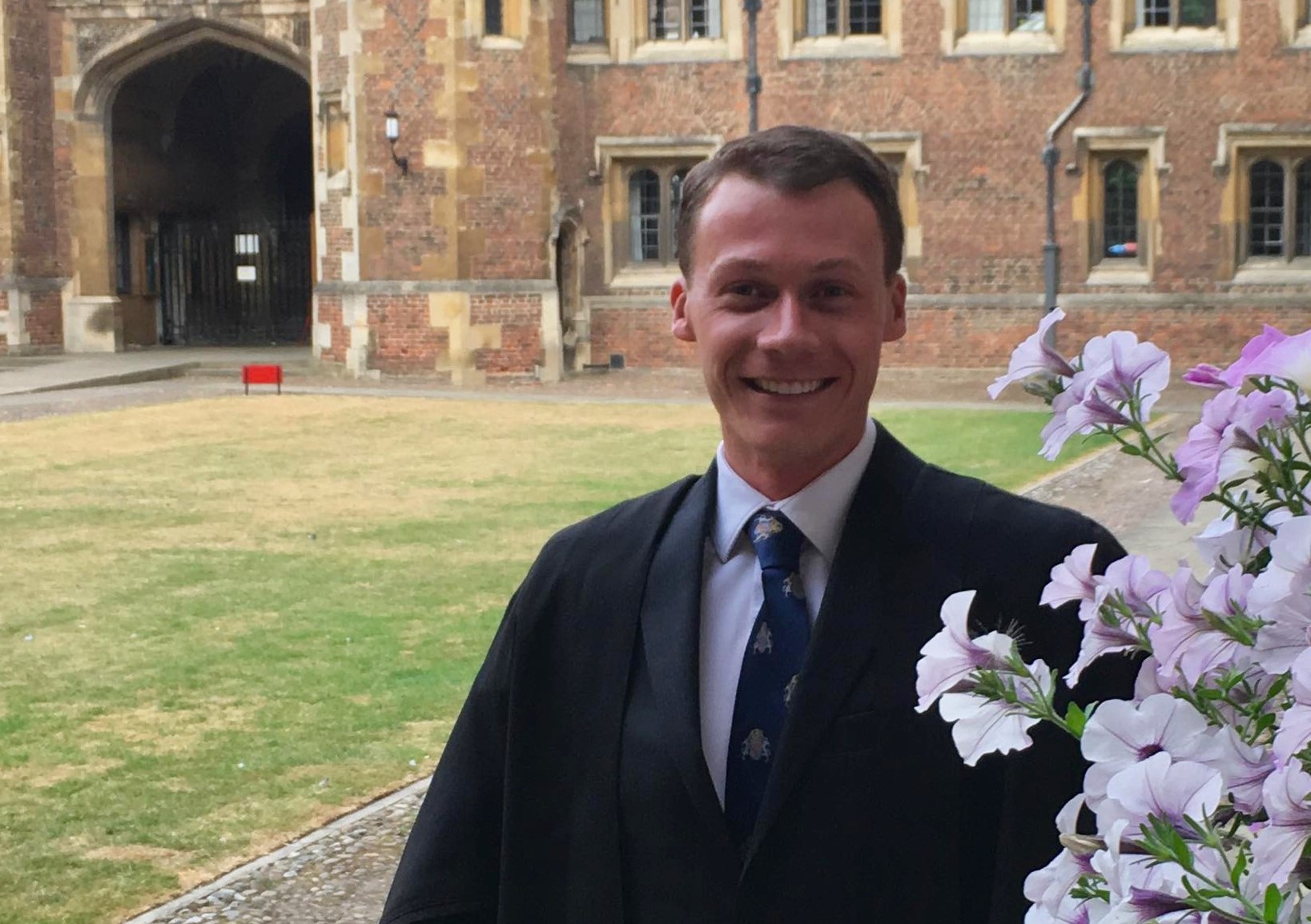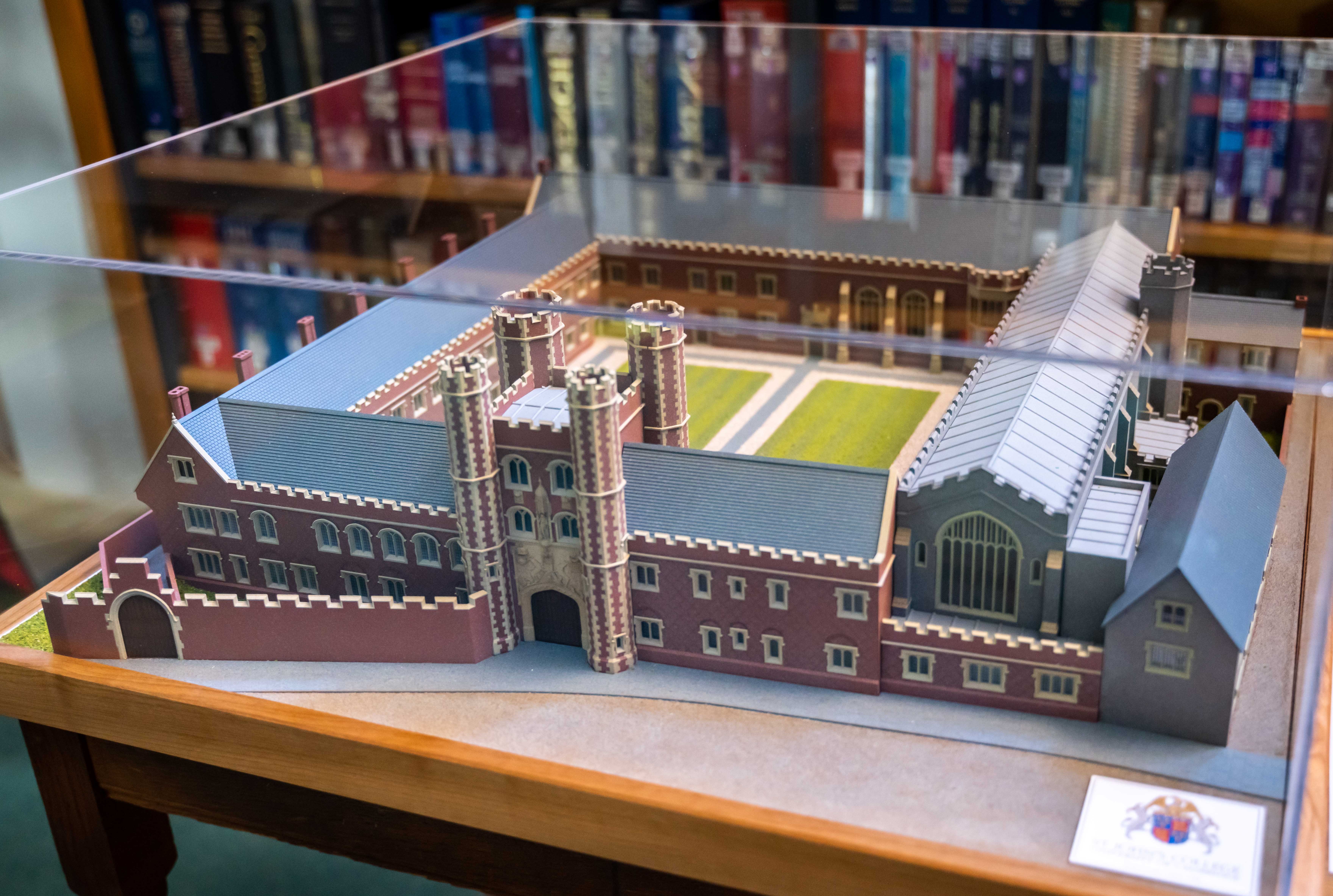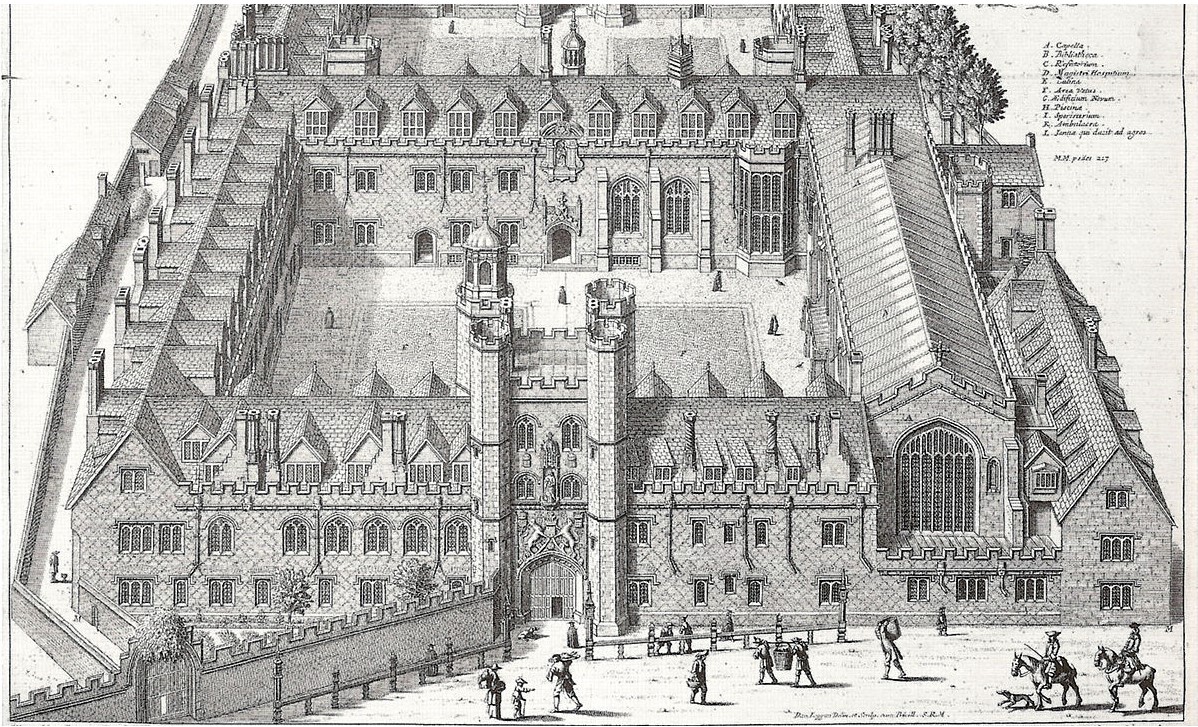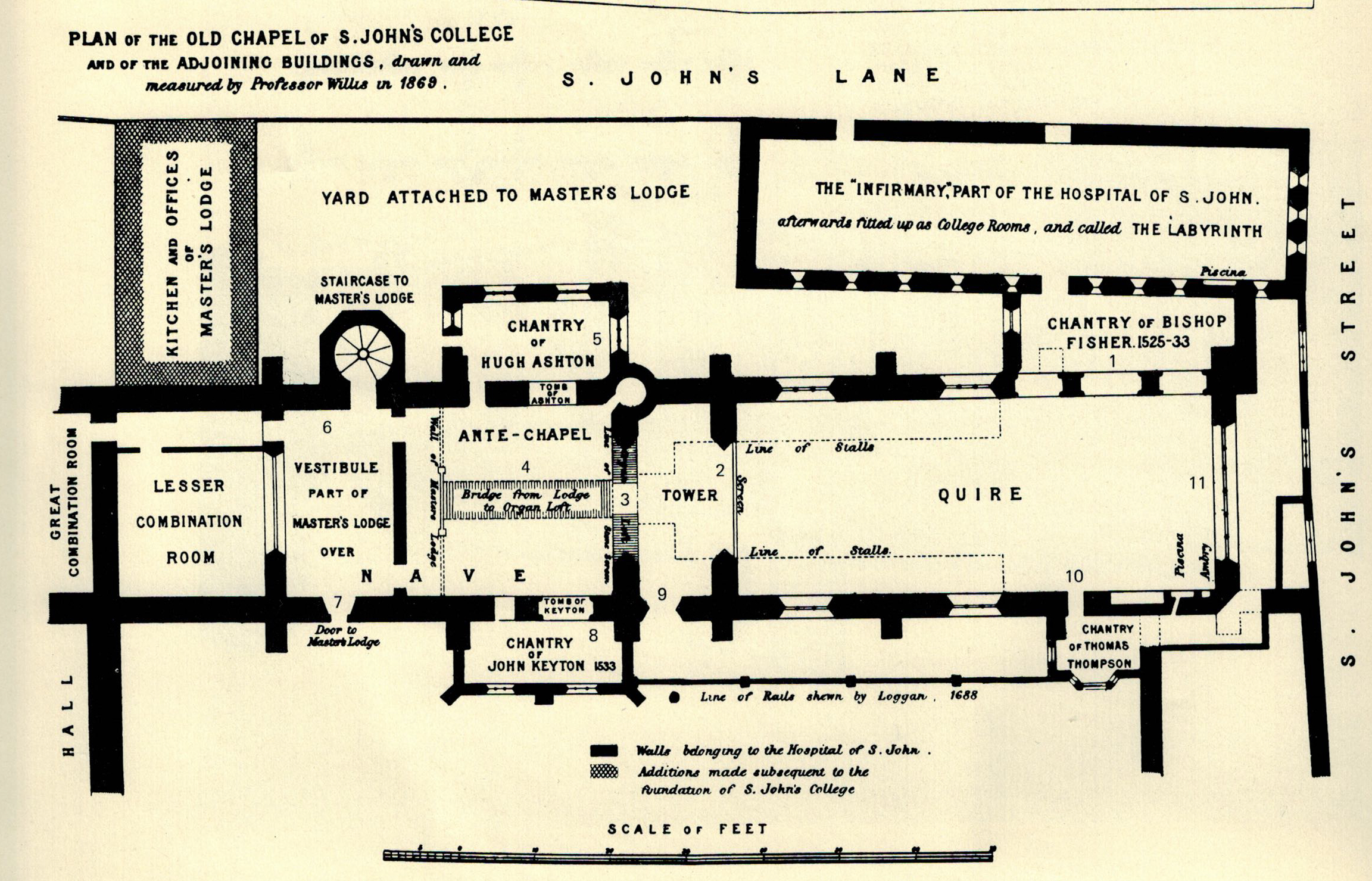Whispers of the past breathe life into First Court project
“The detail in this lovely model takes our breath away. We see things for how they were, five centuries past"
A newly created 3D model of the First Court as it was in the early 16th century has found its way home to St John’s College, after navigating the challenges of the pandemic. Karen Clare found out more.
Alexander Kusztyk, who is in the second year of his PhD in History of Art at St John’s, was the driving force behind the project to recreate the stunning architecture of Bishop Fisher’s First Court in model form. He first became interested in its history while studying for his MPhil, and applied for a grant from the College Annual Fund in 2019 to build a thought-provoking educational exhibit.
“There are so many whispers of the past,” he said. “I wanted people to learn the forgotten, visual roots, of our College, particularly First Court because it has changed so much in the 500 years since the foundation of St John’s.”

The old chapel was built in 1280, modified in 1516-19 following the foundation of the College, and demolished in 1869 to make way for the beautiful Victorian Chapel we enjoy today. The memory of the old chapel is preserved as the footprint in the grass of First Court, while another mysterious building – the infirmary of 1200 that later became student accommodation known as the Labyrinth – has vanished without trace. Along with the original Master’s Lodge, these structures formed the northerly side of the First Court for more than 300 years.
The model illustrates the earliest architectural developments that took place from around 1516 to 1533. “This was an exciting era of building, as it marks the first steps taken to incorporate the pre-foundation buildings into the fabric of the College,” explained Alexander. From the start, he wanted the model to provide a greater understanding and appreciation of the College’s rich, ever-evolving history and close connection to religious worship, dating back to the medieval period.
He was supported in his endeavour by Fellows Dr Mark Nicholls, as project supervisor, and Dr Frank Salmon, his PhD supervisor. Amalgam Models Ltd in Bristol came on board to do the build, with model maker Matt Quick at the reins. Matt began work on the project in December 2019 but progress was abruptly halted by the pandemic. After four months, construction resumed and, after around 430 hours of work, the model was complete. “I’d done most of the design work from home and it largely existed in my own head at that point, so it was very cathartic to finally get down to some proper model making,” said Matt.

The finished model sits on a base approximately 500mm x 500mm and has been made at a scale of 1:100 – that’s 100 times smaller than the original First Court. It was delivered to St John’s on 1 February, where it now resides in the Library until it can go on permanent display and be used for talks and exhibitions. It will eventually feature information plaques telling the social and architectural history of First Court through the ages, as well as reproductions of Victorian photographs, taken before the demolition of the old chapel, from the College archives.
Dr Nicholls said: “The detail in this lovely model takes our breath away. We see things for how they were, five centuries past. The College is small, dominated by its medieval chapel, now long gone, and by the surviving Tudor Great Gate.
“While much is familiar, look carefully and you will see the differences. The original Master's Lodge so convenient for both Hall and Chapel, the walled garden between College and street, the ancient 'Labyrinth' named after the convoluted access route and home to many of our earliest students. It lacks only the tiny figures of our forebears emerging from staircases and striding through the Court, to bring this wonderful concept to life.”
“I’m amazed at how our vision has evolved into something so wonderful, it has far exceeded our expectations"

With Lent Term online due to Covid-19, Alexander is at home with his family in California and has only seen photos of the model, but he is thrilled to know it is now where it belongs. He said: “I’m amazed at how our vision has evolved into something so wonderful. The model is really detailed, it has far exceeded our expectations.
“It was great working with Dr Nicholls and Dr Salmon, they have so much knowledge about the College and its history, I felt as if I was researching in the archives just to catch them up! We also had help and advice from Professor Deborah Howard, Professor Emerita of Architectural History, and Professor Patrick Boyde, Fellow Borderer, so it really was a collaborative effort to visualise the past.”

For Matt, the project has also been atypical. “What made this project a unique challenge for me was the fact a large section of what I was making hasn’t existed for several hundred years and I was unable to find much in the way of architectural drawings for the sections that are still standing,” he explained.
The most useful sources of information proved to be reproductions of architectural engravings made by the artist David Loggan in the later 1600s. As well as the northerly side of the Court, they provided the information required to reconstruct the south side of the Court, before it was given its Georgian façade. College Archivist Dr Lynsey Darby sent Matt images of architectural drawings so he could get to work.
The window and door frames and crenulations of the model were 3D-printed before being slotted into a more traditional laser-cut main structure. “I felt so much of the character of the building was wrapped up in the sculptural stone elements that trying to represent these using layers in 2D shapes, which work brilliantly on more modern designs, would be doing this particular building and model a great disservice,” explained Matt.
“I always have a real sense of achievement whenever I finish a model, you have to get satisfaction out of the end product in this job as the process itself is often long, fiddly and can be quite frustrating. But I feel especially proud of my work on this one.”
Alexander added: “The pandemic made things a little difficult in terms of archival research but thank goodness for the technology that has made the distance a bit less, particularly now I’m in California. We had a lot of discussions by phone and email and Matt kept me informed and sent me photos of the construction, so I felt like I was still there during all the stages, even though I was in a different continent for at least the last portion of this.
“I am very excited to see it in person when I’m back at St John’s.”
Alexander is also looking forward to seeing his favourite part of the College - the Victorian Chapel. He said: “I love the Chapel, it is a beautiful thing. Everything about it is absolutely amazing, it's just a marvel to look at all these little details, architecturally. I know I shouldn't say that, of course, because it isn't part of the model, but it's hard to beat.”
*This article appears in the Lent Term 2021 edition of Eagle Eye.
Published: 9/3/21